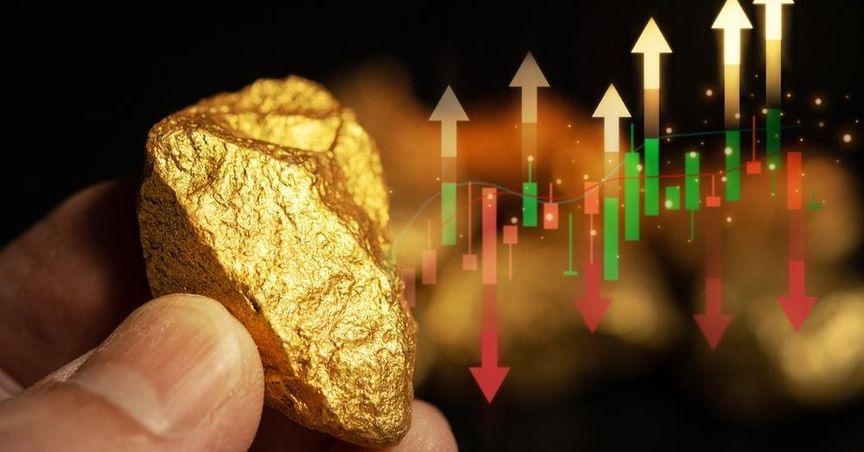Highlights:
- Gold Price Forecast Raised: Goldman Sachs projects gold will reach $3,000 by late 2024, a 10% increase from current levels.
- New FIS-ical Model Identifies Key Drivers: Fear, investment, and speculation form the basis of Goldman’s FIS-ical model, predicting price movements based on demand.
- Central Bank Demand Boost: Structural increase in central bank demand and rising ETF holdings are expected to offset any drag from speculation.
Gold prices are expected to continue their upward trajectory, with Goldman Sachs projecting a rise to $3,000 per ounce by the end of 2024, driven by a potent mix of demand factors. This forecast, which represents a 10% increase from current levels, comes as market forces including geopolitical uncertainty, central bank activity, and investor speculation fuel sustained interest in the metal. Spot gold is presently valued at $2,781 per ounce, marking a steady climb over the past year as investors and financial institutions turn to gold for stability.
Goldman’s outlook is grounded in a new analytical framework called the FIS-ical model, which assesses price changes through a lens of three primary drivers: Fear (F), Investment (I), and Speculation (S). The model draws on these demand dynamics to explain gold’s monthly price movements, offering a structured view of factors influencing the metal’s valuation.
FIS-ical Model Highlights: Fear, Investment, and Speculation
The FIS-ical model evaluates the demand impact of various forces on gold prices, attributing recent increases to the interplay between fear-driven buying, strategic investments, and speculative interest. The “Fear” component, primarily associated with geopolitical tensions and economic uncertainties, often leads to safe-haven purchases by central banks and institutional investors. Investment demand, captured through ETF holdings, represents a strategic hedge for long-term investors, while “Speculation” reflects positioning in futures markets, particularly on the COMEX exchange.
Goldman Sachs estimates that each additional 100 tonnes of gold demand can raise prices by 1.5% to 2%, underscoring the sensitivity of prices to shifts in demand. This model, Goldman asserts, offers insights into how monthly price adjustments correlate with shifts in physical demand from key financial and institutional sources.
Rising Central Bank Demand and ETF Holdings Bolster Price Outlook
A significant portion of the projected price increase is tied to central bank demand, which Goldman Sachs anticipates will grow by 9% by the close of 2025. Central banks worldwide have been accumulating gold at an accelerated pace as part of efforts to diversify reserves and reduce reliance on other major currencies. This trend, driven by a combination of macroeconomic factors and geopolitical considerations, has provided a solid base of structural support for gold prices.
Additionally, as the U.S. Federal Reserve moves toward interest rate cuts, demand for gold-backed ETFs is expected to increase, contributing an additional 7% boost in demand, according to Goldman’s model. Lower interest rates generally enhance gold’s appeal as an investment, given that it competes with interest-bearing assets. The anticipated easing in monetary policy could therefore increase gold’s attractiveness, supporting the price outlook into the next year.
Speculative Activity and Its Effect on Price Trajectory
While central bank and investment demand add stability to the gold market, speculative interest introduces an element of volatility. Goldman’s FIS-ical model predicts a slight decline in speculative positioning, with managed money net-long positions on COMEX expected to normalize. This gradual reduction in speculative demand is forecast to subtract around 6% from gold’s overall price gain. Despite this slight drag, the ongoing support from institutional demand is likely to sustain gold’s upward momentum.
Speculators have historically played a significant role in amplifying price swings, particularly during periods of economic uncertainty or market turmoil. However, Goldman’s model suggests that the structural factors currently driving gold demand outweigh the temporary effects of speculative positioning, with the former providing a more consistent basis for long-term growth.
Price Outlook: Slower Gains Expected Beyond 2024
Goldman Sachs’ latest forecast for gold reflects an upgrade from previous projections for 2024, underscoring the resilience of demand drivers in the face of economic shifts. Looking beyond 2024, however, the bank expects price gains to slow somewhat in 2025 as the factors boosting gold prices begin to stabilize. By 2025, the current rally is expected to have normalized, with gradual adjustments in central bank and ETF demand potentially moderating the pace of further price increases.
While this moderation is anticipated, Goldman’s FIS-ical model provides a framework that captures gold’s potential to maintain higher price levels even as market conditions evolve. As geopolitical risks and economic volatility continue to impact global markets, gold’s role as a hedge against instability is likely to keep demand steady over the longer term.
Conclusion: Sustained Demand Signals Long-Term Price Strength
The projected rise to $3,000 per ounce by the end of 2024 reflects the enduring appeal of gold as a stable asset in an unpredictable market environment. With central banks continuing to accumulate reserves and ETF holdings expected to rise alongside easing monetary policies, gold appears poised to maintain its appeal for both institutional and retail buyers. Goldman’s FIS-ical model provides a nuanced understanding of the diverse drivers behind this rally, highlighting how fear, investment, and speculation intersect to shape gold’s pricing dynamics.
In a landscape defined by economic uncertainty and complex geopolitical factors, gold’s consistent demand across different buyer categories signals robust support for its role as a safe-haven asset. While some moderation in gains may be expected beyond 2024, the fundamentals underpinning the market suggest a favorable outlook for gold as a long-term store of value.




